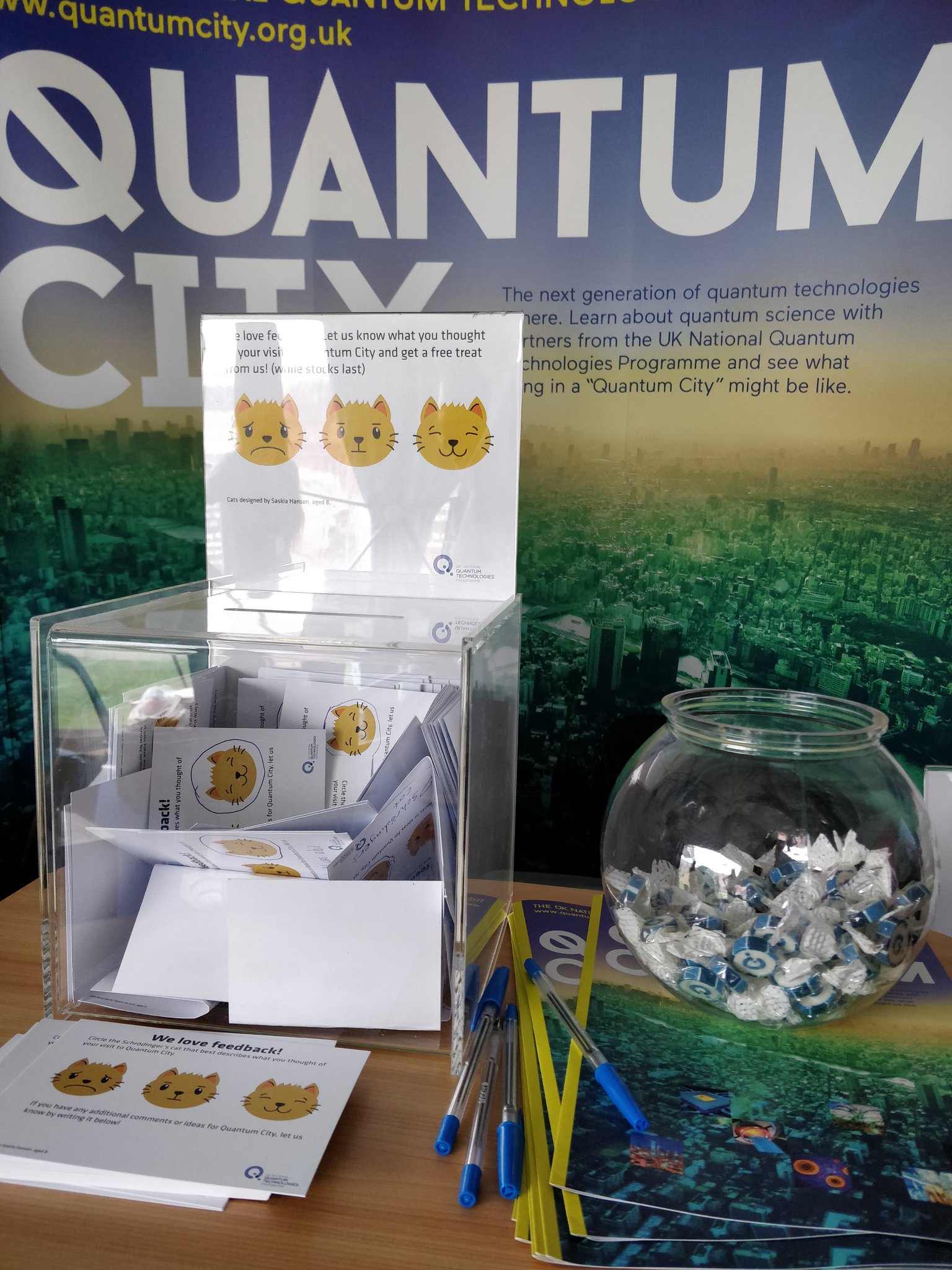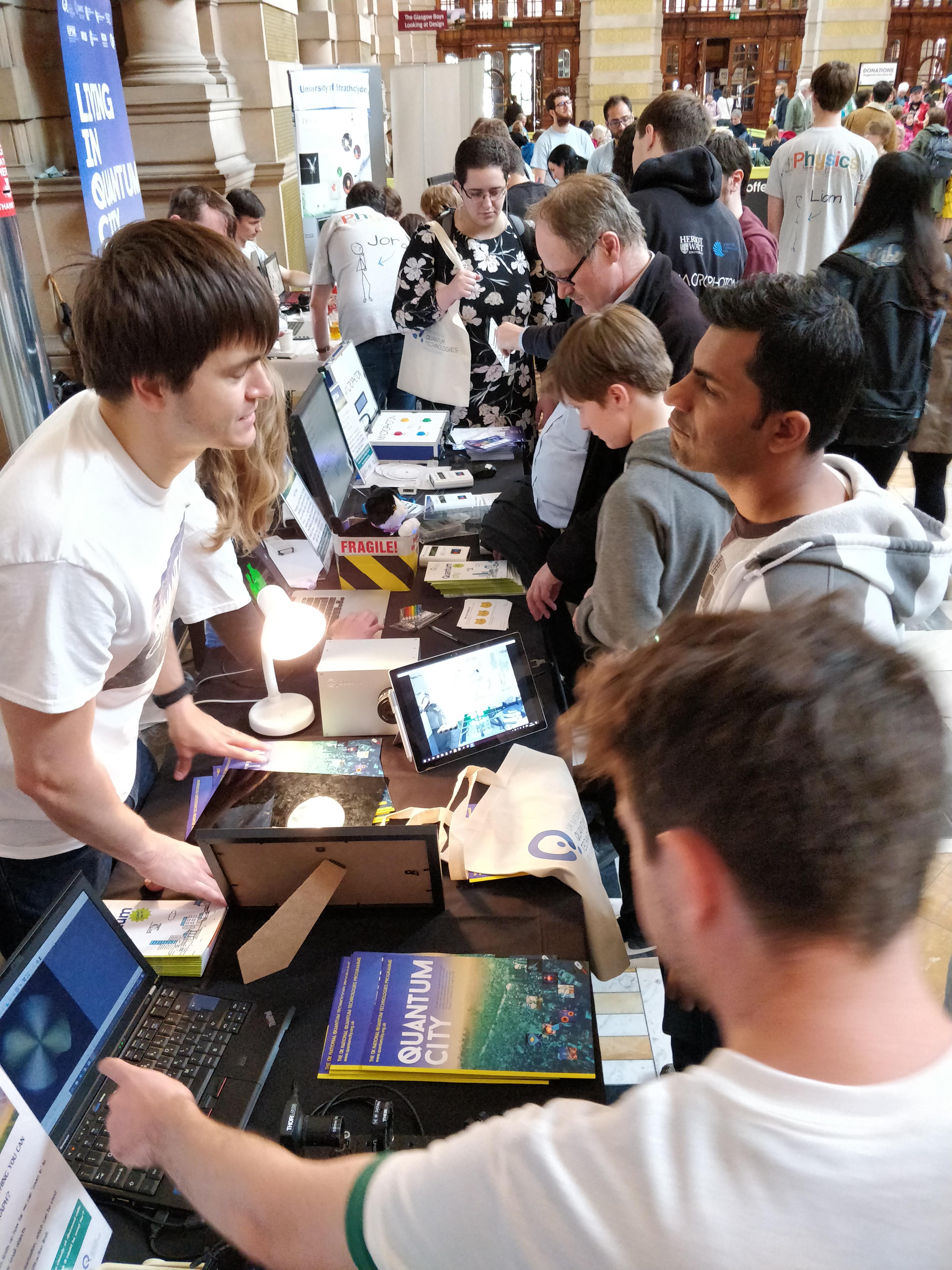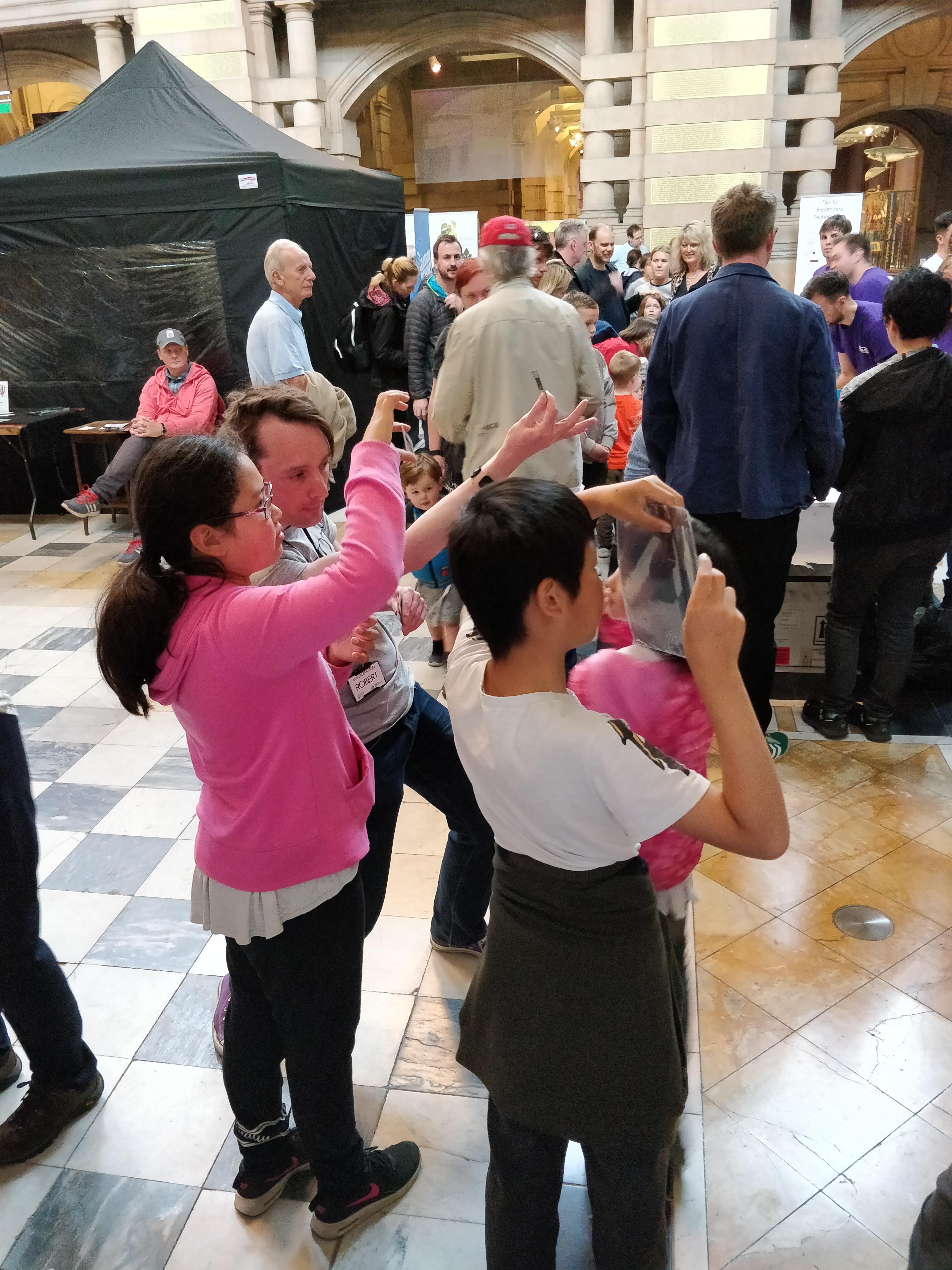
Quantum City draws crowds at summer science festivals
Quantum City, the joint public engagement initiative by partners of the UK National Quantum Technologies Programme, attracted over 6000 visitors at the Cheltenham and Glasgow Science Festivals last month.
Featuring interactive activities to highlight quantum key distribution and exhibits such as ion traps, a single pixel camera, magnetometers and atomic clocks, Quantum City demonstrated how new research in quantum properties translated to emerging technologies that could have an impact on everyday life in the future.
Visitors to Quantum City ranged from school children to families and senior citizens. Everyone was generally very positive about their visit. Over 94% of people who provided feedback gave a thumbs up with a smiley Schroedinger’s Cat and there were nice comments such as:
"Thank you for making it easier for kids to understand science"
and:
"This was amazing to find out about new technology!"
Quantum City also proved a hit with researchers who were exhibiting at the stand. Shannon Nicley, a researcher at NQIT who was at the Cheltenham Science Festival said:
"We had a lot of people interacting with visitors, it seemed like the booth was constantly busy, which was so great to see. I know for me it is especially gratifying to interact with young people, and especially to see young girls realise that they actually understand something "hard" and science-related, especially with scary words around it like quantum".
QuantIC researcher, Dr Neal Radwell said:
"Seeing the wonder on kids' faces when you let them see 'the invisible' was priceless. It was very fun and satisfying to get kids interested in some science"
Quantum City’s next stop will be New Scientist Live in London from 20-23 Sept 2018.


